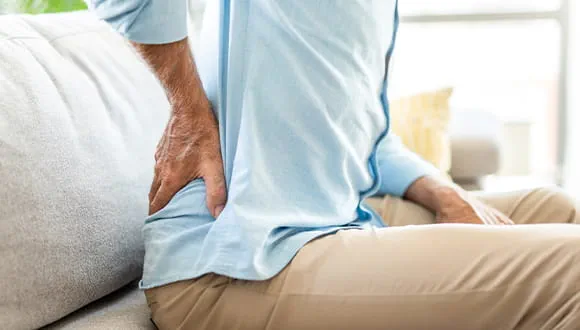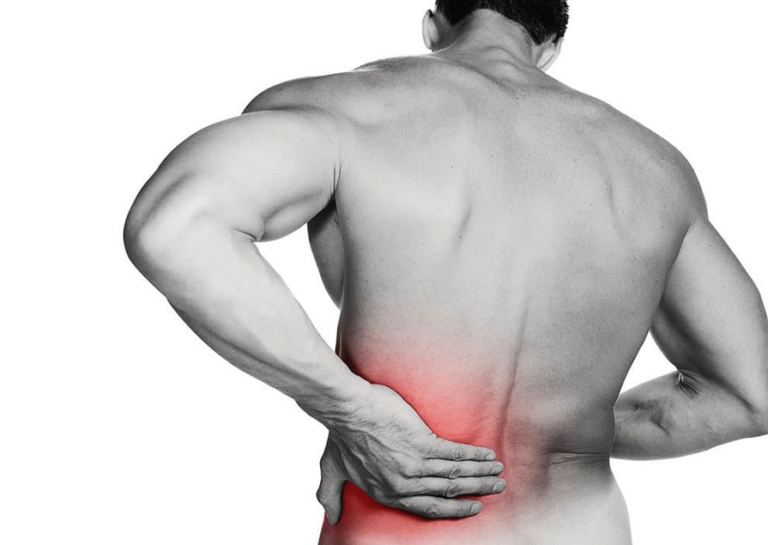Sharp lower back pain after leg press can occur due to improper form, overexertion, or not warming up properly. If you experience this, stop the exercise immediately. Apply ice to the area, rest, and if the pain persists, seek medical attention. To prevent this, ensure proper form during the exercise, warm up adequately before starting, and cool down afterward. Listen to your body’s signals and don’t overexert yourself. Persistent or severe pain may indicate a more serious injury, so it’s important to consult a healthcare professional if needed.
Why Does Sharp Lower Back Pain Occur After Leg Press?

Lower back pain after performing a leg press can be attributed to several factors
Raising Your Lower Back From The Seat
When you lift your lower back from the seat during a leg press, it can lead to compression of the intervertebral disks due to the weight’s force. This can result in nerve roots being pinched in your lower spine, causing severe lower back pain.
Excessive Range Of Motion
Using a large range of motion during a leg press can put a lot of tension on your quads. However, this forces your buttocks and lower back to lift, allowing your pelvis to rotate. This flattens your lumbar spine, which is naturally curved, leading to lower back discomfort.
Weak Core Muscles
Your lower back and core muscles work together to stabilize your spine and posture during compound exercises like the leg press. If your core muscles are weak, your lower back has to bear more load, which can cause pain if too much pressure is applied.
High Feet Position
Placing your feet high on the machine during a leg press involves your pelvis more than it should in the exercise, making your lower back vulnerable.
Heavy Lifting
Since the leg press is seen as a safer alternative to squats, many people tend to lift heavier weights. However, this can lead to a breakdown in form and technique, making your lower back vulnerable.
How to Avoid Lower Back Pain After Leg Press?
To avoid experiencing lower back pain after a leg press, it’s important to ensure you’re using the correct form, adequately warming up before the exercise, and cooling down afterward.
It’s also crucial to pay attention to your body’s signals to prevent overexertion. Here are some tips on how to prevent back pain during leg press.
The Correct Way to Perform a Leg Press

Ensuring you’re using the correct form during a leg press is key to preventing injury and maximizing the effectiveness of the exercise. Here are some steps to ensure you’re performing a leg press correctly
- Positioning: Sit back on the machine with your head and back flat against the padded seat. Your bottom should be resting against the seat as well.
- Foot Placement: Your feet should be placed on the footplate, hip-width apart.
- Movement: Press the weight with your legs, ensuring your knees remain slightly bent.
- Safety: Always maintain a neutral spine throughout the leg press movement.
Remember, it’s essential to learn how to use the leg press machine properly. Paying attention to your form can maximize the strength-building benefits and prevent injury.
The Significance of Warming Up and Cooling Down
Warming up before exercising and cooling down afterward can help prevent injuries, including lower back pain. Here’s why they’re important
Warm-Up
A good warm-up before a workout dilates your blood vessels, ensuring that your muscles are well supplied with oxygen. It also raises your muscles’ temperature for optimal flexibility and efficiency. By slowly raising your heart rate, the warm-up also helps minimize stress on your heart.
Cool-Down
Cooling down after a workout is as important as warming up. After physical activity, your heart is still beating faster than normal, your body temperature is higher, and your blood vessels are dilated. This means if you stop too fast, you could pass out or feel sick. A cool-down after physical activity allows a gradual decrease at the end of the episode.
Remember, it’s recommended to partake in a minimum of 5-10 minutes of a light warm-up along with 5-10 minutes of a cool down. Start the cool down with a less intense version of the same exercise, then transition into a flexibility portion hitting major muscles groups with about a 10-30 second stretch.
What Should You Do If You Experience Lower Back Pain After Leg Press?
If you encounter sharp lower back pain after executing a leg press, it’s crucial to understand the appropriate response. This section will offer guidance on immediate actions to take and when it’s necessary to seek medical intervention.
Immediate Actions to Take
If you experience sharp lower back pain during or after a leg press, it’s important to halt the exercise right away. Here are some steps to follow
Rest: Allow your body to rest. Continuing to exercise while in pain can lead to more serious injuries.
Ice: Apply a cold pack to the painful area for up to 20 minutes multiple times a day. This can help decrease inflammation and numb the area, providing pain relief.
Compression: Use an elastic medical bandage to wrap the affected area to help decrease swelling.
Elevation: Try to elevate the affected area if possible. This can help decrease swelling.
Pain Relievers: Over-the-counter pain relievers such as ibuprofen can help decrease pain and inflammation.
When to Consult a Healthcare Professional
Persistent or severe lower back pain may be a sign of a more serious injury that requires medical intervention. Here are some signs that you should consult a healthcare professional
- Severe or Constant Pain: If your pain is severe or constant, especially at night or when you lie down, it’s time to see a doctor.
- Pain Spreads Down One or Both Legs: If the pain extends below the knee, it could be a sign of sciatica.
- Weakness, Numbness or Tingling in One or Both Legs: These symptoms could indicate a nerve compression.
- Unintended Weight Loss: Unexplained weight loss can be a sign of a serious underlying condition.
- Fever: A fever or chills along with back pain could indicate an infection.
If you experience any of these symptoms, or if your pain doesn’t improve after a week of home treatment, it’s important to seek medical attention. Remember, it’s always better to be safe and get a professional opinion if you’re unsure.
FAQ
Is it normal to have lower back pain after leg workout?
Yes, it’s common to feel some discomfort in your lower back after a workout. However, sharp or persistent pain is not normal and could indicate an injury.
What is the injury after leg press?
Injuries after leg press often result from poor technique or lifting too heavy weights. These can lead to lower back pain due to the compression of intervertebral disks.
Why does my lower back hurt when pressed?
Lower back pain during leg press can occur if your pelvis goes into posterior tilt (hips pushed forward and butt tucked under), causing your lumbar spine to flatten.
How do you relieve sharp lower back pain?
Sharp lower back pain can be relieved by resting, applying ice to the area, using an elastic medical bandage for compression, elevating the affected area, and taking over-the-counter pain relievers.
How do you fix a slipped disc?
Fixing a slipped disc often involves wearing a back brace, undergoing physical therapy, receiving injections, and in some cases, surgery.
Can you naturally fix a slipped disc?
Yes, most herniated discs can heal naturally over time with conservative treatment, which includes rest, medication, physical therapy, and chiropractic care.
Is walking OK for slipped disc?
Yes, walking is a low-impact exercise that can help relieve the symptoms of a herniated disc without putting too much strain on the back.
Can a slipped disc fully heal?
Yes, most herniated discs can fully recover over time with conservative treatment.
Final thoughts
In conclusion, sharp lower back pain after leg press is a common issue that can often be prevented with proper form and preparation. It’s crucial to maintain correct posture, warm up adequately before the exercise, and cool down afterward. If you experience this pain, immediate steps such as rest, ice, compression, and elevation (RICE) can be beneficial. However, if the pain persists or is severe, it’s important to seek medical advice to prevent further injury. Remember, your health and safety should always be your top priority when exercising. Stay safe and keep fit!

